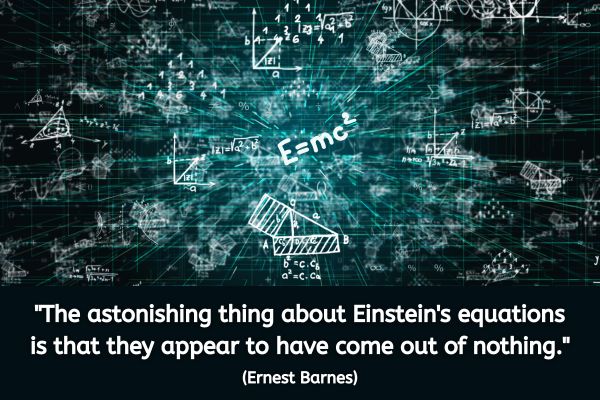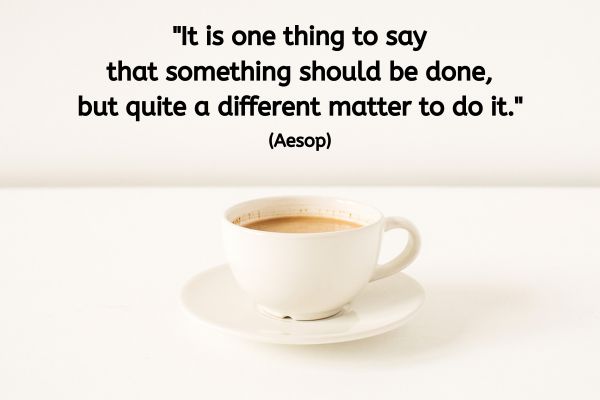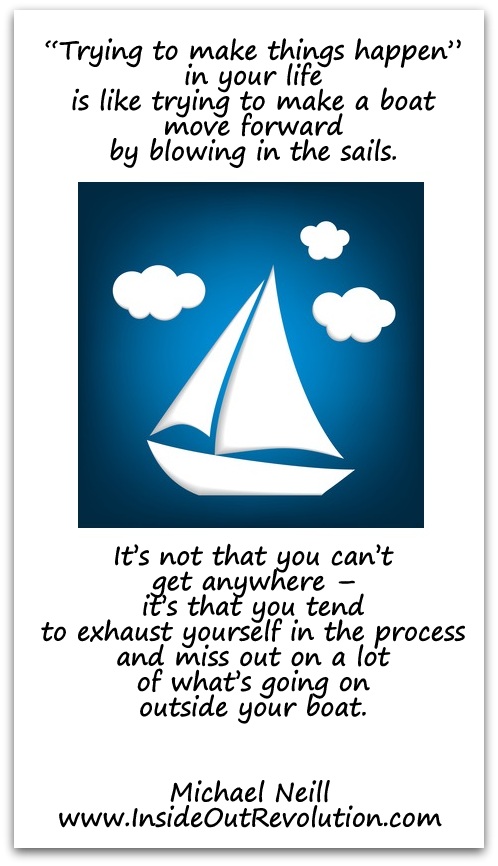In this weeks Friday Guest Post Richard Nugent reflects on his coaching journey so far …
The Evolution of a Coach
by Richard Nugent
Over the past year, I’ve been lucky enough to spend time with some of the very best coaches on the planet. As well as raising my coaching game hugely, I have become acutely aware of the journey that I and other coaches travel. The phases in a coach’s development were certainly never mapped out at the beginning of my own journey. At each stage I thought I was there – I had arrived as a coach. How wrong I was.
My aim with this tip is to give you a sense of just what is possible – whether you are a leader, trainer, facilitator or even a professional coach. I want to expand the horizons of what’s possible for you and your clients. While reading, consider which phase you’re in – and whether you could add even more value by developing yourself further.
Even if you are in the fourth stage of evolution – the phase I have called the “transformational coach”, I would like to open up the discussion about what’s next. Let’s begin, as all good stories do, at the beginning.
The Process Coach
I started coaching back in my days as a trainer in a large Call Centre. I was expected to be a great coach and to help staff improve their performance. The trouble was that my experience of coaching had been limited to the sports world – where coaching meant that the coach demonstrated a technique, had the person try it out and then tell them what they did wrong in order to correct it. I was sure that coaching in a business context couldn’t be the same, could it?
Around that time, I experienced (endured?) a 2-day coaching skills programme – teaching me the delights of the GROW model, some listening skills and, of course, the feedback sandwich. Big on theory – and very un-brain friendly. I was released out on to the call centre floor to listen in on calls and provide coaching to those lucky advisors whose customer interactions I had monitored. I tried to follow GROW as my trainer had taught me, and the session often went something like this:
Richard: ”What’s your goal for this session?”
Advisor: ”errr… for you to tell me how I have done whilst you’ve been listening in”
Richard: ”Hmmmm… OK. How do you think the call went?”
Advisor: ”Fine, I think”
Richard: ”Good. Good. What are the opportunities for you to improve next time?”
Advisor: ”Look – what the hell are you on about? Just tell me if I did OK or not”
Then I would give them a feedback sandwich…
“Well, I thought the opening was really nice – and you closed it well. You gave the customer lots of incorrect information though. However, your voice sounded really professional”
Of course, I wasn’t always this bad – and over time I developed my rapport skills and ability to give feedback in a way that added value for the advisors, and ultimately for the customers.
So, there is a place for really great performance feedback, and for coaching on the intricacies of a specific process. it forms the meat and drink for many people in business today and the chances are that if you started your coaching journey in an organisation, it probably began with process coaching. However, this is just the beginning.
The Developmental Coach
Many years are ditching GROW, I finally saw it applied the way I’m sure it was meant to be. I worked with a coach whose opening question was “How can I help?” They moved elegantly through the stages of the model, jumping back and forth as the client required, drawing from a huge bank of high quality questions.
She created new resources in the clients she worked with, helping them to explore new options before helping them to decide on the most congruent option and then encouraging them towards absolute commitment to action. Most impressive of all was that the coaching was ‘content-free’. She never once advised or led – she simply asked great questions.
Great developmental coaches spend more time focused on what the client is saying (or not saying) than to the coaching model. They are masters at matching and mirroring – and perhaps most important of all – they help their clients to focus on what is possible – not just what the problem is.
In this second phase of evolution, the emphasis is on development. When I discovered that coaching didn’t just have to be remedial – my fire was well and truly lit. I was certain that I wanted to be a coach.
What I didn’t yet appreciate were the possibilities that still lay ahead when I fully developed the new skills I was acquiring.
The Master Coach
You are probably a Master Coach if:
- you know the single fastest way to build deep rapport with any client
- you have an extensive bank of great questions to draw from – but more often than not, the most elegant resource-unlocking question just pops into your head intuitively
- you are a master of your own emotional state and are able to strongly influence the states of your clients
- you are able to create outstanding breakthroughs with clients even when you don’t know what you’re coaching them about
- you probably draw on the work of transformational coaches like Nancy Kline, Michael Neill and Sir John Whitmore – and other valuable approaches such as Solutions Focus and Flow
- you know that you unlock clients’ potential to overcome broad issues in their lives – and to create more joy and possibility than they ever imagined
I was fortunate to serve and help many clients in my ‘Master Coach’ phase. In fact, I still develop coaches to be Master Coaches. I think it’s a highly valuable evolution. Whilst the focus is still firmly on respecting the client’s map of the world – and not suggesting or leading them down any particular route – you can help clients to commit more fully. To get here takes dedication, practice, study and commitment. If you are a Master Coach, I genuinely believe you are already making the world a better place.
The Transformational Coach
Has a coach ever told you a single story that has changed your life forever? If so, you have experienced Transformational Coaching. Michael Neill defines Transformational Coaching as “a pervasive shift in or a way of being in the world. At this level it is not enough for us to help people develop a skill or change a feeling. It’s helping people transform their intangible selves – and in so doing change their experience of everything”. (SuperCoach, Michael Neill, Hay House, 2009, ISBN 978-1-84850-070-9)
A Transformational Coach will do whatever is necessary to help their client create what they want to create. Often this starts by helping them to understand the power of ‘creating’. If you are new to this distinction between ‘reporting’ and ‘creating’ the closest single phrase I’d use to sum it up is the one credited to Kathlyn Hendricks: ”Your life is a reflection of what you are already committed to”.
Transformational Coaches have a deep understanding of just what is possible. They realise that, when you are swimming in the sea, it’s hard to see the water – so often the most transformational work is the most obvious. Another distinction is that they work best when their clients are ready to be coached. They use metaphor, stories and their own life experiences on top of their already-honed master coaching skills to help clients realise their full potential. Oh and they learn just as much from their clients as their clients learn from them.
Beyond Coaching
So, what’s the next stage in our evolution as Coaches? Is it something more business focused or more spiritual? Does it include some of the newer, less understood tools such as Emotional Freedom Techniques (EFT), or is it more scientifically based, supported by the rapid advances in our understanding of neuroscience?
I am not there yet, but I am certain of three things:
1. there is another level
2. it is up to us to create
3. I would love to hear your views!
Time to Reflect
Wherever you are on your journey, what’s the next step, and what will you do to take this?
What will coaches be doing differently in 2015?
This week’s guest post comes to you from Richard Nugent of the Kaizen Team. My aim with this tip is to give you a sense of just what is possible – whether you are a leader, trainer, facilitator or even a professional coach. I want to expand the horizons of what’s possible for you and your clients. While reading, consider which phase you’re in – and whether you could add even more value by developing yourself further. Even if you are in the fourth stage of evolution – the phase I have called the “transformational coach”, I would like to open up the discussion about what’s next.
About the Author/Further Resources
Richard helps successful business leaders to move from being ‘good’ to ‘outstanding’. He challenges clients to change the way they think about work, to focus on what is most important and to stop firefighting for good.
His work is based on three key beliefs:
- If you can think it, you can do it
- Leaders must be prepared to go first
- To perform at the very highest level you must have a passion for what you do
Clients’ return on investment from his energetic and ground breaking work is well into the millions of pounds, dollars and euros. His reputation as one of the UK’s leading transformational leadership coaches has been cemented by outstanding results with an impressive client list including Tesco Bank, EDF Energy, Merlin Entertainments, ASOS and Lego. He also serves as a consultant to a number of colleges, business schools and professional footballers and cricketers.
www.kaizen-training.com





